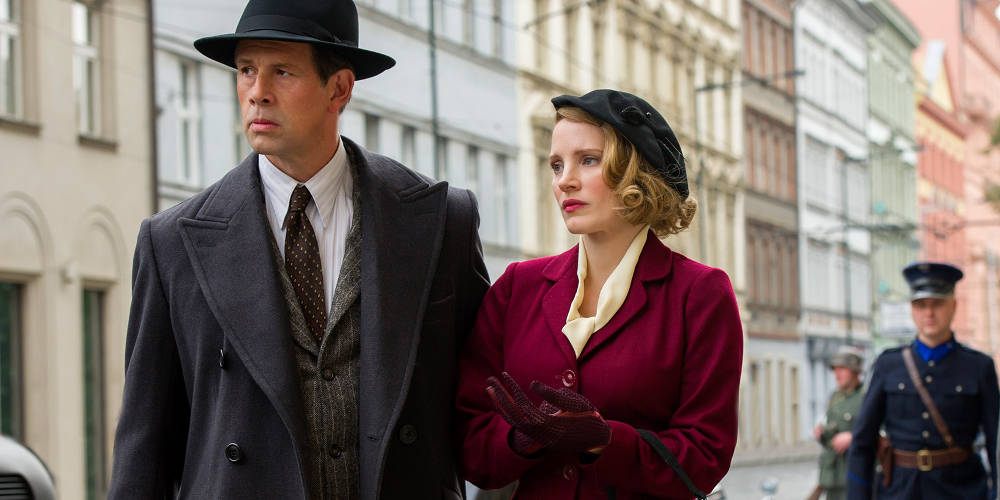First things first – don’t let the title of this movie fool you on this one, dear readers. This is not a kid-friendly period piece remake of Dr. Doolittle or a real-life action version of Zootopia. Instead, this cinematic gem offers a new perspective on the extremes of World War II.
Based on a combination of both Diane Ackerman’s non-fiction book of the same name and the diaries of Antonina Żabińska (published in Poland as Ludzie i zwierzęta, translated as: People and Animals in 1968), The Zookeeper’s Wife starts in the spring of 1939 in Warsaw, Poland. Here, we see Antonina (Jessica Chastain) and her husband Jan (Johan Heldenbergh) lovingly care for each other, their son, and the many varied animals that inhabit their zoo.
Those of you who paid attention in history class will realize what’s coming next, though, as the Nazis are about to invade Poland and Warsaw is about to surrender to Nazi occupation. The first glimpse of the horrors of war arrive with the soul-racking sounds of bomber planes and stuka sirens as we watch animals and their habitats get blown to smithereens. (What did I tell you about this not being a kids movie?)
When their friends are about to be moved to the ghetto, Antonina appeals to Jan to hide her best friend in a secret room where she can sleep during the day and materialize at night, to avoid the the Nazi guards on site each day.
Before long, however, they realize there is more they can do to help the harshly persecuted Jews. They smuggle men, women, and children out of the ghetto and hide them in their basement, using various cage and tunnel systems created for exotic animals, to smuggle Jews to safe houses. They clothe and feed them and in many ways treat them like family; playing piano at midnight is the cue for all those in hiding to appear in the parlour for an evening drink. Ultimately, they were able to rescue more than 300 Polish Jews.
The horrors of the war are unrelenting throughout the film and many times I wished I had picked lighter fare to review. However, I was struck by a number of things. First, by the willingness of Antonina and Jan to stand true to their own values and risk their own safety (and that of their son) to do what they believed was right. In one heated scene, they acknowledge the impact their choices have made on their own mental health and their relationship, but they never waver from their commitment to doing what they believed to be right.
Second, was the importance of ritual. I laughed at the absurdity of the situation each time the film showed Antonina playing the piano to summon everyone from their hiding places to enjoy an aperitif. It was simply bizarre for me to imagine the juxtaposition of the war and brutality that existed between Jews and Gentiles right outside their parlour and the loving humanity that existed within it. At the same time, though, I can imagine how comforting it might have been to have these moments of tradition and connection to help cope with the atrocities around them.
Finally, their work started as a very small gesture – helping out a friend in need. Next, they were smuggling Jews out of the ghetto hidden under piles of pig slops and before you know it, they had a partnership with a German official who helped set up a system where Jan had paperwork to just walk the Jews right out of the ghetto, no pig slops required.
Jan and Antonina never could have known at that time how many lives they might save or how their story would play out. Fear stop many in their tracks. And yet, they took action, regardless of the fear they felt. We truly never know what the future will bring; we can only do the next right thing.












